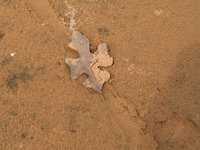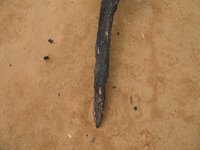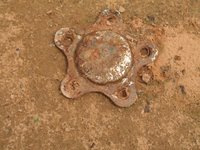

 We arrived at the lake in the early afternoon when the sun was high and the air was still. The brackish water, lacking the strength of a wave, niggled bits of trash onto the sand like an old woman pushing a broom.
We arrived at the lake in the early afternoon when the sun was high and the air was still. The brackish water, lacking the strength of a wave, niggled bits of trash onto the sand like an old woman pushing a broom. “It’s down about seven feet,” grunted the teen with a beer in his hand. Shirtless and sweating, his buddies sat on the bed of their rusty Ford. No use.
We unloaded the girls anyway. A change of scenery wouldn’t hurt. I eyed a man under the bridge as he stood in his skiff and threw a net over the side. Shrimp in this lake? The girls ran past me and dug their toes in the orange sand, oblivious to the sad state of an Oklahoma drought. They were squealing and running from one piece of trash to the next.
“Mom!” “Look!” “Treasure!”
So I did look, through the eyes of my child, and saw the treasures the lake coughed up on the sand. It took a few minutes to adjust my perspective since I’m a visionary kind of person; I see things the way they could be, ought to be. Looking for beauty in tarry, orange sand requires blocking out everything you hoped for. I had to focus on one patch at a time. Then I saw the bugs and all their secret holes. If I stood really still they came out like the sand crabs in Galveston. I stamped my feet and they scurried to the nearest tunnel.
The blackened driftwood, soggy string, and rusted metal plate knitted together into an artistic collage as my mind struggled to contain the images. I know artists to take found trash, mix mediums, and create beautiful sculptures and reliefs. But here was art presenting itself to me, if only I could peel away the hope for something better.
I’m learning this in other ways: When I critique an essay what is the basis for my evaluation? Is the glass half-empty or half-full? Can I rejoice in pain? Is God’s grace sufficient for me? Blessed am I who thirsts! For then I shall know the thirst of others.



































